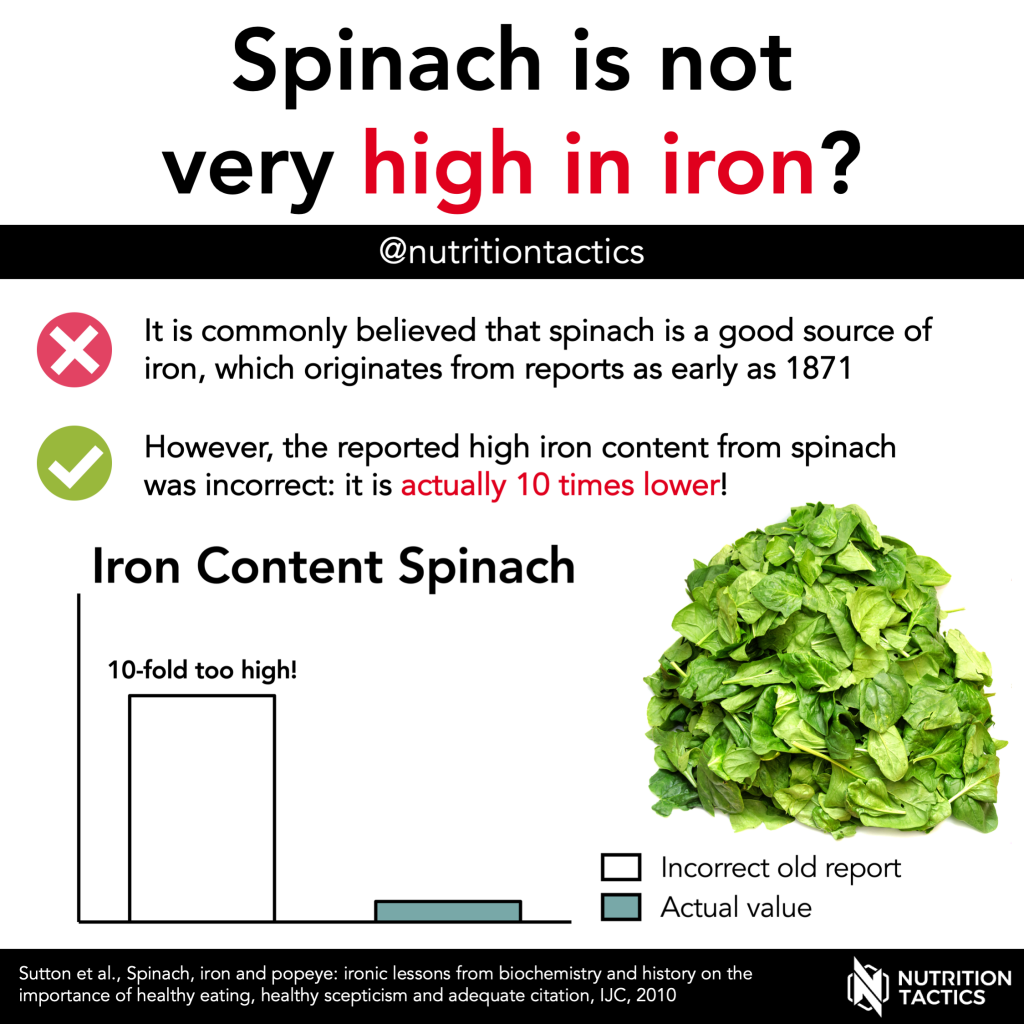Spinach is a great source of iron, right?
No, not really.
This belief originates from the late 19th and early 20th century. The earliest report was published in 1871 and stated that spinach was relatively high in iron.
However, it was not clear whether dried or fresh spinach was used in these early reports. A report in 1936 stated that fresh spinach should be used for the determination of iron content instead of dried spinach, because drying of the samples interferes with the analysis.
The iron content of fresh spinach is now set at around 2-4 mg per 100 g, while dried spinach has about 20-40 mg per 100 g (10-fold difference!).
In addition, there are two forms of iron: heme and non-heme (this was not known in 1871). Iron in plant-based products is typically non-heme iron, which has poor absorption in the small intestine.
In contrast, animal-based sources typically contain heme iron that is much better absorbed.
It has also been suggested that the high reported iron content in spinach was simply the result of an incorrectly placed decimal, which overestimated the iron content by ten-fold. However, there is no evidence for this mistake.
In conclusion, spinach is not a great iron source as often claimed.
(fun fact: the creator of Popeye stated that Popeye ate spinach because of the high vitamin A content, not iron).
Go to the next uncategorized infographic:
Wine and beer drinking order does not affect hangover?


Leave a Reply